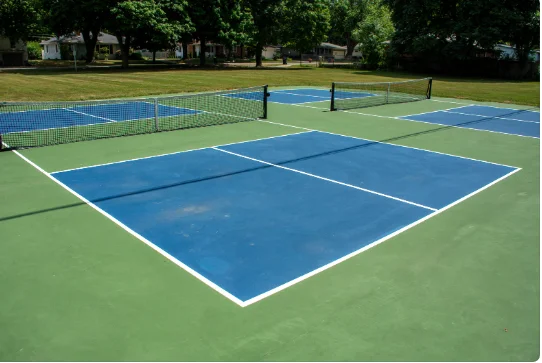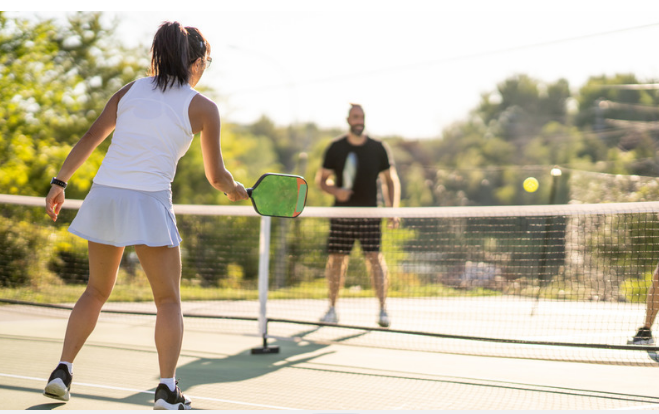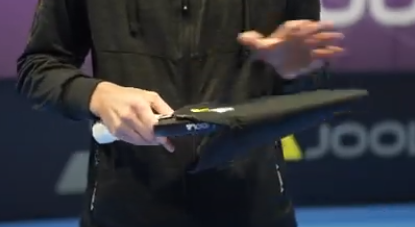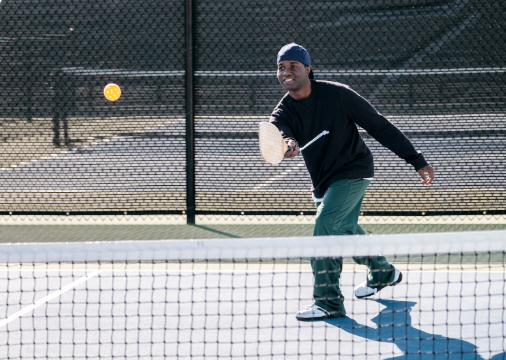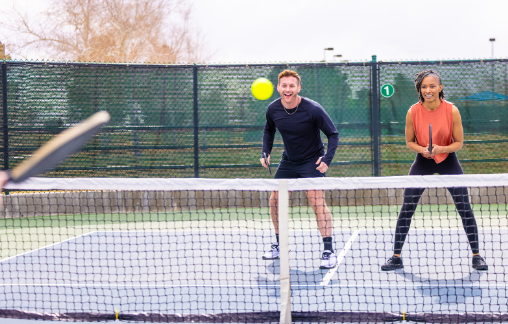Small Space, Big Fun: Figuring Out Minimum Area for a Pickleball Court
Pickleball, blending elements of tennis, badminton, and table tennis, has become increasingly popular for its accessibility and engaging gameplay. Figuring Out Minimum Area for a Pickleball Court This surge in popularity has led to a growing interest in building pickleball courts, especially in areas where space is at a premium. A crucial aspect for enthusiasts and facility planners is understanding the minimum space requirements to install a pickleball court. The standard dimensions of a pickleball court are 20 feet wide by 44 feet long, but when space is limited, every inch counts.
For those looking to incorporate pickleball courts into smaller areas, it’s essential to maintain the integrity of the game while being mindful of spatial constraints. Creative solutions are often required, such as utilizing existing spaces like multi-use sports areas, or even adapting parts of parks or communal areas for temporary or permanent courts. While the play area should adhere to official dimensions as closely as possible, the surrounding space, often used for player movement and safety, can be adjusted according to available room. This adaptation ensures that the sport remains accessible and enjoyable, even in constrained environments. The goal is to strike a balance between maintaining the standard court size for fair play and adapting to the spatial limitations of the intended location.
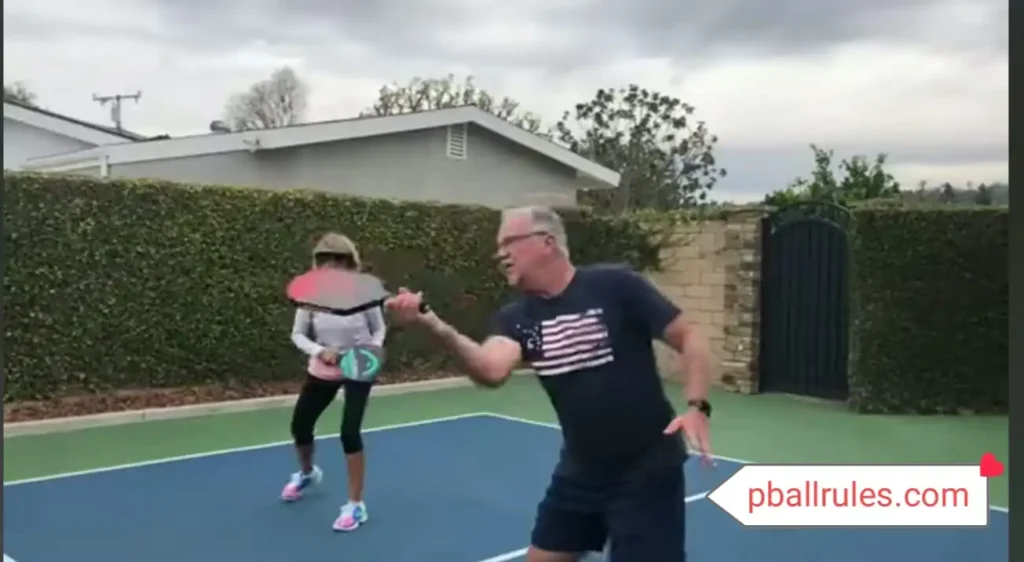
Understanding Pickleball Court Dimensions
Understanding the dimensions of a pickleball court is crucial for players, enthusiasts, and facility planners alike. A standard pickleball court measures 20 feet in width and 44 feet in length, mirroring the dimensions of a badminton court. This size is specified for singles and doubles play, making the design and layout process straightforward. The court is divided into several zones: two service areas on either side and a non-volley zone, commonly known as ‘the kitchen,’ which extends 7 feet from the net on both sides.
The net height in pickleball is another critical dimension, 36 inches at the sidelines and 34 inches at the center. These measurements ensure a consistent playing experience across various courts. It’s important to note that while the court dimensions are standard, additional space around the court is recommended for player safety and movement. Ideally, a minimum of 10 feet behind each baseline and 5 feet on either side of the court should be allocated, bringing the total recommended area to 30 feet by 54 feet. Adhering to these dimensions ensures a safe and enjoyable playing environment, whether it’s for casual play or competitive matches. This standardized sizing helps maintain the integrity and uniformity of the game globally.
Allocating Space for Safety and Movement
Allocating adequate space for safety and movement around a pickleball court is as essential as the court dimensions themselves. While the court measures 20 feet by 44 feet, additional space is crucial for players’ safety and to accommodate the dynamic nature of the game. The recommended total area, including this buffer zone, is ideally 30 feet by 54 feet. This additional space accounts for 10 feet behind each baseline and 5 feet on either side of the court.
This buffer zone serves multiple purposes. Firstly, it provides players with enough room to move freely and chase after balls, which is vital for intense volleys and serves. This space is especially important for doubles play, where four players are moving simultaneously. Secondly, it serves as a safety margin to prevent injuries. Players often need to step out of the court boundaries during play, and without sufficient space, they risk collisions with walls, fences, or other hazards.
In situations where space is limited, such as in urban settings, backyard installations, or multipurpose sports facilities, it’s sometimes necessary to compromise on these buffer zones. However, a minimum of a few feet around the court should always be maintained to ensure basic safety and playability. Creative solutions like retractable netting or temporary boundary markers can help maximize limited spaces while maintaining safety standards.
Moreover, this additional space can be multifunctional, serving as a spectator area or a waiting space for players during tournaments. Properly allocated space not only ensures safety and freedom of movement but also enhances the overall playing experience, making the game more enjoyable and accessible. Therefore, when planning a pickleball court, considering both the court dimensions and the surrounding buffer space is essential for a well-designed and safe playing environment.
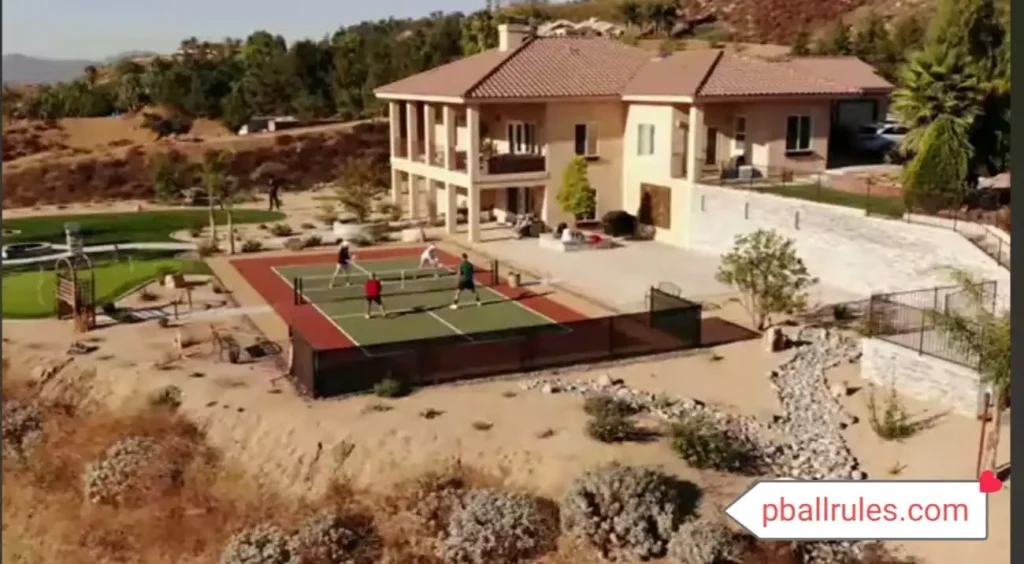
Creative Solutions for Limited Spaces
When space is a constraint, incorporating a pickleball court requires creative and innovative solutions. Urban areas, small backyards, or multi-use sports facilities often pose challenges due to limited available space. However, with some ingenuity, pickleball courts can still be a feasible addition.
One effective solution is the use of multi-purpose sports surfaces. These areas can be designed with overlapping lines for different sports, including pickleball, tennis, and basketball. The key is to use distinct colors for each sport to avoid confusion. This approach maximizes the utility of the space while catering to diverse sporting interests.
Portable pickleball equipment is another practical solution. Portable nets, which can be easily set up and taken down, allow for the transformation of various spaces like driveways, parking lots, or even flat grassy areas into temporary pickleball courts. Removable court tape or chalk can be used to mark the boundaries and non-volley zones, offering flexibility and convenience.
In urban settings, rooftop courts represent an innovative use of space. These underutilized areas can be transformed into vibrant sporting venues, offering a unique playing experience with cityscape views.
Indoor spaces can also be adapted for pickleball. Gymnasiums, community centers, and even warehouses with sufficient ceiling height can be converted into pickleball courts. Using temporary lines or tape, these spaces can be quickly set up for pickleball play and reverted for other uses as needed.
These creative solutions not only address the spatial challenges but also enhance accessibility to the sport, allowing more people to enjoy pickleball in a variety of settings. By thinking outside the traditional court, pickleball enthusiasts can enjoy the game in virtually any space, large or small.
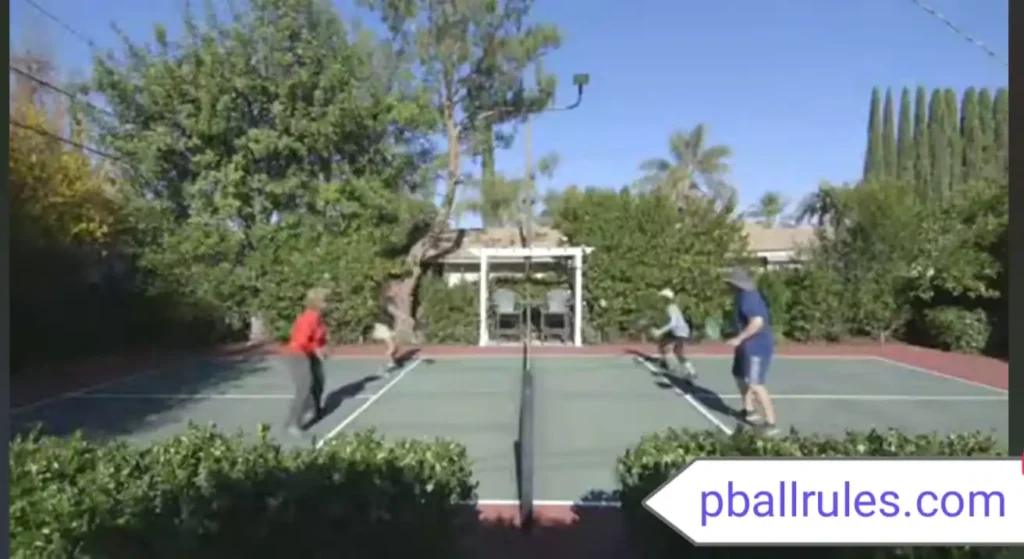
The Impact of Court Surface and Materials
The choice of surface and materials for a pickleball court significantly impacts the game’s quality, player safety, and maintenance requirements. When planning a court, especially in limited spaces, these factors become even more crucial.
Concrete and asphalt are the most common materials for outdoor pickleball courts. Concrete provides a consistent, durable playing surface, but it can be hard on players’ joints over time. Asphalt, slightly softer than concrete, offers a bit more cushioning, but it requires more maintenance as it can crack and fade under extreme weather conditions. For both surfaces, a textured acrylic finish is often applied to provide better traction and reduce the risk of slipping.
Synthetic or modular surfaces are popular alternatives, especially for indoor courts or multi-use areas. These surfaces are softer and more forgiving on the body, reducing the risk of injuries. They are also easier to install and maintain. However, they can be more expensive upfront compared to traditional concrete or asphalt.
The color and texture of the surface also play a crucial role. Light-colored surfaces reflect sunlight and stay cooler, which is particularly important in hot climates. Textured surfaces provide better grip, enhancing player safety, especially in wet conditions.
In smaller spaces, where a court might be used for multiple purposes, choosing a surface that is durable and versatile becomes important. For instance, in a multi-use gymnasium, a synthetic surface that can accommodate basketball, volleyball, and pickleball is ideal.
Lastly, proper maintenance is key regardless of the material chosen. Regular cleaning, repainting of lines, and surface repairs extend the life of the court and ensure a safe and enjoyable playing experience. The right balance of durability, performance, and maintenance needs is essential for a successful pickleball court installation.
Conclusion: Maximizing Your Pickleball Experience
In conclusion, creating an optimal pickleball experience, especially in limited spaces, hinges on thoughtful planning and innovative solutions. Understanding and adhering to official court dimensions is fundamental, but equally important is considering safety and movement space around the court. When space constraints exist, utilizing multi-purpose areas, portable equipment, and adaptable indoor spaces offers creative ways to enjoy pickleball without compromising on the quality of play.
The choice of court surface and materials also plays a crucial role in the pickleball experience. Whether opting for traditional concrete or asphalt, or more joint-friendly synthetic surfaces, the key is to balance durability, performance, and maintenance needs. Additionally, surface color and texture should be chosen to enhance visibility and player safety.
By embracing these considerations, pickleball enthusiasts can enjoy a high-quality, enjoyable, and safe game, regardless of space limitations. The sport’s growing popularity and its adaptable nature make it ideal for a wide range of environments, from backyard setups to community centers and urban rooftops. Ultimately, the goal is to make pickleball accessible and enjoyable for all, fostering a community spirit and promoting an active lifestyle through this engaging sport.
FAQs about Pickleball Court Design and Setup
1. What are the standard dimensions of a pickleball court?
The standard dimensions for a pickleball court are 20 feet in width and 44 feet in length. These dimensions are consistent for both singles and doubles.
2. How much additional space is needed around a pickleball court for safety?
It’s recommended to have at least 10 feet of space behind each baseline and 5 feet on either side of the court. This extra space allows for safe player movement and reduces the risk of injuries.
3. Can pickleball courts be set up in limited spaces?
Yes, pickleball courts can be adapted to limited spaces using multi-purpose sports areas, portable nets, and temporary court lines. Creative solutions like using rooftops or indoor facilities are also viable options.
4. What types of surfaces are best for pickleball courts?
Common surfaces for pickleball courts include concrete, asphalt, and various synthetic materials. The choice depends on factors like durability, maintenance, player comfort, and budget.
5. Is it possible to have a pickleball court in a multi-use sports area?
Yes, multi-use sports areas can accommodate pickleball courts by using distinct colored lines for different sports. This allows for efficient use of space and resources.
6. How can I maintain my pickleball court?
Regular maintenance includes cleaning the surface, repainting lines as needed, and checking for any cracks or damage. For synthetic surfaces, follow the manufacturer’s guidelines for care and maintenance.


